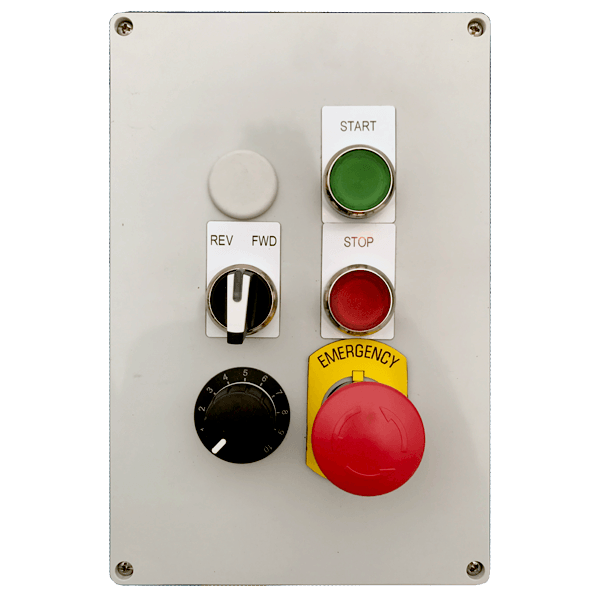
Control Stations
Control stations are the devices with required operators installed in immediate area of an equipment for the purpose of operation, status, shutdown, push button station. There are located remotely from the controller but close to the equipment operated and wired in field.
The control stations such as motor control stations, Start Stop Station and custom control stations primarily use push buttons, selector switches, Emergency Stop push button switch, and some special controllers inside the station. These components shall be of the grade suitable for the explosion proof / water tight specifications including the fittings and glands. Following explanation applies to these stations as well. However, depending on the application, various mounting and finished options are available in the market place.
Hazardous location (hazloc) panels and explosion proof panels are designed for use in the following classified areas:
- Class I, Div. 1 & 2, Groups B, C, D
- Class II, Div. 1 & 2, Groups E, F, G
- Class III
The applicable standards for these panels are as follows:
- NEMA: 3, 3R, 4, 7BCD, 9EFG
- cUL to CSA Standard C22.2 No. 30, No. 25
- UL Standard: 1203
- Enclosure Type 4X (requires 4X option)
The panels are designed to protect the internal systems from external factors such as explosions, combustible gases and dust particles.
The connections between the filed instrumentation and internal panel components may be connected through Zener barriers or intrinsically safe barriers.
Explosion proof panels are built with robust metal walls to allow the containment of internal explosions from components and the sustainment of external explosions.
Fittings, glands, and other system components will be ensured to have the appropriate rating for the the above mentioned standards. Components with a general area classification cannot be used. The doors of the enclosure sections are built with water tight seal compounds and gaskets between them.
The following are some steps taken to specify such panels:
- Determine the environmental specifications
- Determine the explosion protection classification
- Determine the purging or pressurization requirement (if needed)
- Specify any necessary electrical enclosure modification
There are multiple ways of protecting electrical equipment to prevent an explosion when used in the presence of a flammable gas, combustible dust, or easily ignited fibers.
For an explosion to occur, there must be three elements present – fuel, oxygen, and an ingnition source. The fuel and oxygen must be present in the correct amounts – not enough fuel (a lean mixture), or too much fuel (a rich mixture) cannot ignite.
Each method of protection addresses the Fire Triangle in some way – either by containing and internal explosion or eliminating one or more of the components necessary for an explosion to occur.
